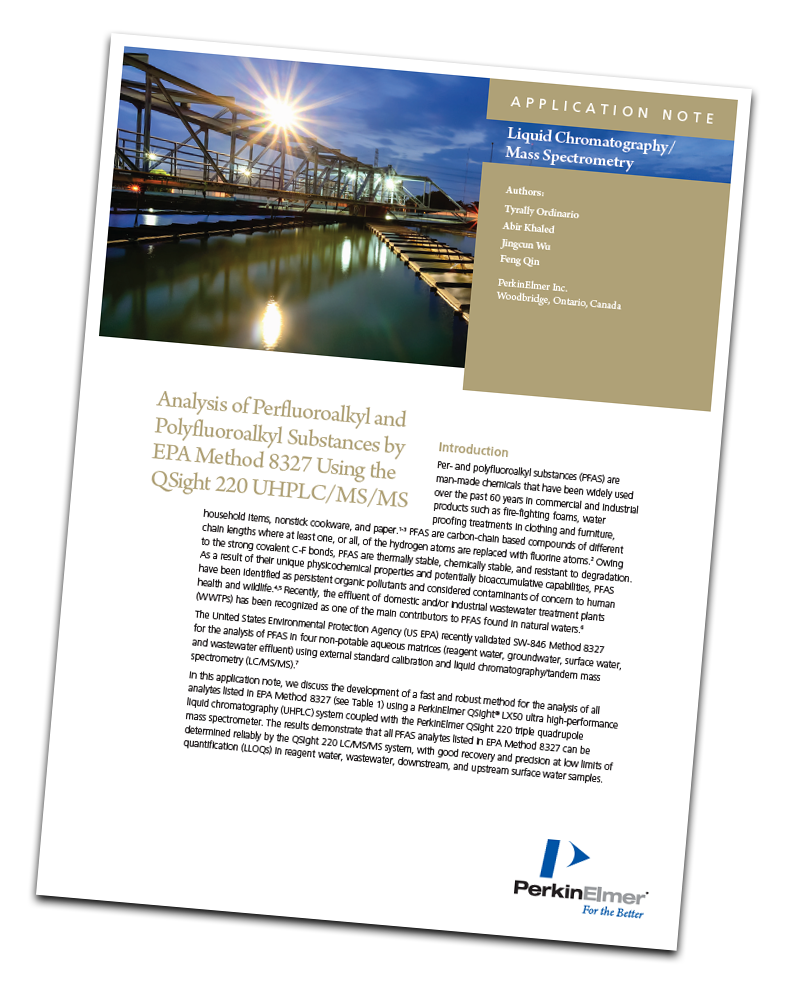In this application note, the development of a fast and robust method for the analysis of all analytes listed in EPA Method 8327 is discussed.

 Per- and polyfluoroalkyl substances (PFAS) are man-made chemicals that have been widely used over the past 60 years in commercial and industrial
Per- and polyfluoroalkyl substances (PFAS) are man-made chemicals that have been widely used over the past 60 years in commercial and industrial
products such as fire-fighting foams, water proofing treatments in clothing and furniture, household items, nonstick cookware, and paper. As a result of their unique physicochemical properties and potentially bioaccumulative capabilities, PFAS have been identified as persistent organic pollutants and considered contaminants of concern to human health and wildlife. Recently, the effluent of domestic and/or industrial wastewater treatment plants (WWTPs) has been recognized as one of the main contributors to PFAS found in natural waters.
The United States Environmental Protection Agency (US EPA) recently validated SW-846 Method 8327 for the analysis of PFAS in four non-potable aqueous matrices (reagent water, groundwater, surface water, and wastewater effluent) using external standard calibration and liquid chromatography/tandem mass spectrometry (LC/MS/MS).
This application note uses a PerkinElmer QSight® LX50 ultra high-performance liquid chromatography (UHPLC) system coupled with the PerkinElmer QSight 220 triple quadrupole mass spectrometer. The results show that excellent linearity is achieved for all PFAS analytes and surrogates with the R2 values greater than 0.996. The calculated LLOQs were well below the suggested LLOQ values in Method 8327. The method was applied to the analysis of four different types of water samples: reagent water, wastewater, downstream wastewater, and upstream wastewater. The recoveries attained were between 72-109% for the reagent water samples spiked with PFAS analytes and surrogates. The recoveries of PFAS from wastewater, downstream surface water, and upstream surface water samples spiked with PFAS surrogates were between 82-104%. The calculated % RSDs were ≤ 15% for all the studied water samples.
In conclusion, the method is shown to be effective for use for PFAS analysis to achieve reliable and accurate results and meet or exceed requirements set by the EPA Method 8327.